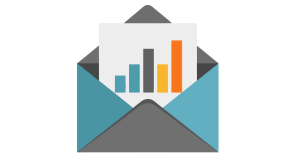An effective newsletter is an extremely valuable marketing tool that can go a long way in educating and persuading your clients and prospects to work with you. They help keep your brand top-of-mind for consumers, establishing credibility and authority in the space and notifying readers of products and company news that may interest them.
So, maybe you’re new to the idea of sending newsletters, or maybe you’ve been sending newsletters for quite some time and realizing your audience isn’t very engaged. This is why sending out newsletters with the right elements is extremely important. I’ll share with you the 6 key elements of an effective newsletter, to ensure your newsletters are both stimulating and engaging.
6 Elements of an Effective Newsletter
1. Good Content Marketing
I’d like to start here because good content is first and foremost top priority when creating an effective newsletter.
The whole point of you sending newsletters is because you don’t want to lose your brand being top of mind. Good content marketing is meant to help, not sell, and engage your readers through interesting topics. A good way to describe this style of content would be something topically adjacent to your industry but not about you or your business.
Also, remember to keep everything short and engaging. With technology constantly evolving, we’re all familiar with being on-the-go, as are most of our readers. The more concise and relevant your content is, the more likely your readers won’t be hitting the delete button.
Lastly, even if your newsletter is going to a million people, each recipient should feel like you’re speaking to him or her directly, so personalization is important. Your emails should address each individual by first name, so they feel like they are being spoken to directly.

2. Audience Knowledge
Segment your audience to tailor your emails to individual groups or audience personas. The more finely-tuned your email segments, the more effective your communication will be – which means higher click-through rates and more customer conversions.
Before you craft an email, think about who you’re speaking with. What’s his background? What topics is she interested in? Why did he subscribe to your email list? Then tailor your message to reflect your audience’s personality, style and interests.
3. Strong Subject Line
Email subject lines are like first impressions. They create intrigue for higher open rates, and build trust with your readers. The subject line should tell your audience what to expect when they open your newsletter. I’ve received newsletters with vague subject lines that were supposed to be clever, and went unopened. Don’t trick people into opening your newsletter with enticing subject lines that have nothing to do with the content. You will lose your readers’ trust and your credibility.
Have a few subject lines in mind and can’t decide which one to use? Be sure to test your subject lines using an A/B split test on small percentage of your audience. Whichever one performs the best, use the winner for the remainder of your email list to ensure the best open rate.

4. Visually Appealing Templates
Your newsletter should be representative of you and your brand, from colors to subject material. Consistency is key, and that means your logo, contact info, and all other elements should be in the same place every time so that your subscribers can easily locate your content and pay close attention to it. It’s also important that formatting works for all device types, and that you make plenty of room for your design elements in order to build a highly read and engaged newsletter.

5. Contact and Social Information
Let your audience know how they can read your blog and interact with you via social media. Include social media icons for your networks at both the top and the bottom of your emails.
Remind your email subscribers how they can access your latest content. If you blog regularly, integrate an RSS feed into emails with recent blog posts. In addition, be sure to include links to your website because one of the goals of your newsletter is to drive traffic to your site.

6. Call to Action
End every email message with a direct call to action – the next step you’d like your subscribers to take, as well as a single overarching message you want everyone who receives the newsletter to come away with. Then work backwards from there to develop a newsletter that accomplishes these two goals. In addition to a clear message, add a link or button to make it easy for them to immediately take action.

Need help with your email strategy or building an effective newsletter? We can walk you through the basics and the advanced tactics. Drop us a line at expert@emfluence.com.

